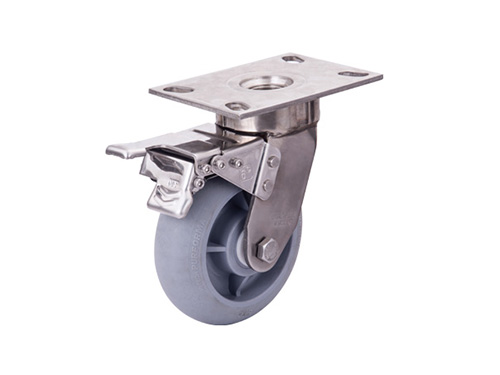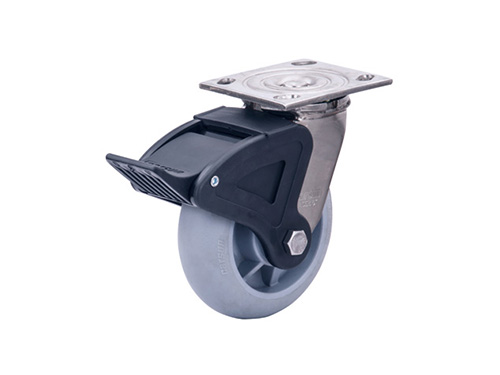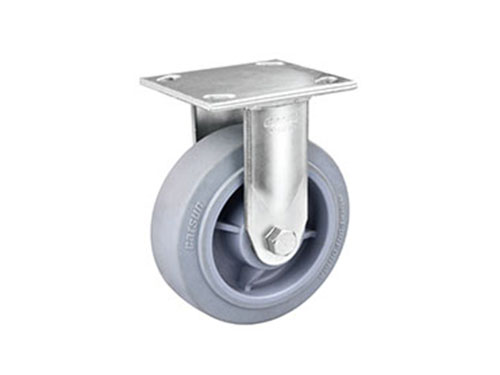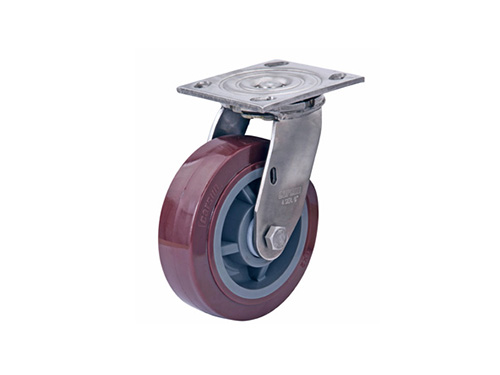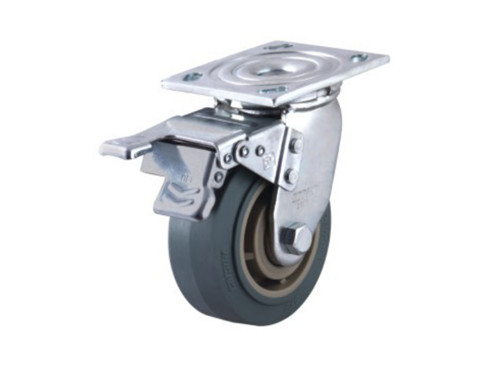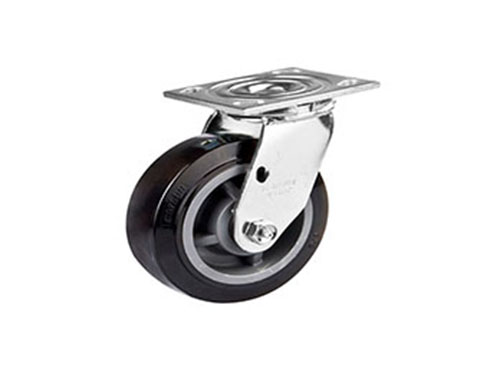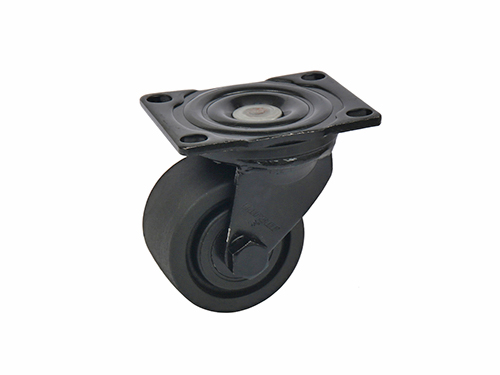Impact Resistant Heavy Duty Casters (304kg)
Load Capacity: ≤304kg
Installation Method: Top Plate
Installation Size: (76-92)x(67-76)mm
Top Plate Size: 114x102x6mm
Bolt Hole Size: 11.2mm
Load Height: 241mm
Wheel Diameter: φ200xW51mm
Wheel Material: Performa Rubber
Bracket Type: Swivel/Rigid
Bracket Material: Metal
More Items You Might Request
| Wheel Diameter | Tread Width | Load Capacity | Wheel Material | Bracket Type | Installation Type | Installation Size | Overall Height |
|---|---|---|---|---|---|---|---|
| φ100mm | 51mm | 180kg | Performa Rubber | Swivel/Rigid | Top Plate | (76-92)x(67-76)mm | 143mm |
| φ125mm | 51mm | 180kg | Performa Rubber | Swivel/Rigid | Top Plate | (76-92)x(67-76)mm | 165mm |
| φ150mm | 51mm | 270kg | Performa Rubber | Swivel/Rigid | Top Plate | (76-92)x(67-76)mm | 191mm |
| φ200mm | 51mm | 304kg | Performa Rubber | Swivel/Rigid | Top Plate | (76-92)x(67-76)mm | 241mm |
Features
Impact resistant heavy duty casters are designed to provide exceptional durability and stability in demanding environments. Some of the key features of these casters include:
- Load Capacity: Impact resistant heavy duty casters are designed to handle heavy loads. They can typically support weights ranging from several hundred to several thousand pounds.
- Impact Resistance: These casters are designed to withstand impacts and rough handling. They are constructed from high-strength materials such as steel or high-grade thermoplastics to resist damage from impacts.
- Swivel Mechanism: Heavy duty casters typically have a swivel mechanism that allows them to rotate 360 degrees. This makes it easier to maneuver heavy loads in tight spaces.
- Brake System: Heavy duty casters often come with a brake system that can be engaged to lock the wheels in place. This feature helps to prevent the load from rolling or moving unexpectedly.
- Bearing Type: Impact resistant heavy duty casters typically use high-quality bearings such as sealed precision ball bearings or tapered roller bearings. These bearings provide smooth and quiet operation while also enhancing the caster’s load-bearing capacity.
- Wheel Material: Heavy duty casters often have wheels made of high-strength materials such as polyurethane, nylon, or steel. These materials are selected for their durability and ability to handle heavy loads without degrading.
- Mounting Options: Impact resistant heavy duty casters can be mounted in a variety of ways, including top plate mounting, stem mounting, and bolt hole mounting. The mounting option selected will depend on the specific application and load requirements.
Applications
Impact resistant heavy duty casters are used in a wide range of applications where durability, strength, and stability are essential. Some of the common applications of these casters include:
- Material Handling: Heavy duty casters are commonly used in material handling applications, such as industrial carts, dollies, and platform trucks. These casters are designed to withstand the weight of heavy loads and provide stable and smooth movement.
- Manufacturing: Heavy duty casters are used in manufacturing environments where heavy machinery or equipment needs to be moved or repositioned. These casters provide mobility and stability for large and heavy machinery, making it easier to move them around the factory floor.
- Automotive: Heavy duty casters are used in the automotive industry for moving heavy parts or equipment. They are often used on mobile toolboxes, workbenches, and other equipment that needs to be moved around a garage or workshop.
- Aerospace: Heavy duty casters are used in the aerospace industry for moving large and heavy components such as aircraft engines, fuselage sections, and landing gear. They provide the strength and stability required for the safe movement of these large and heavy components.
- Medical Equipment: Heavy duty casters are used in medical equipment such as hospital beds, operating tables, and mobile equipment. These casters are designed to handle the weight of the equipment and provide smooth and stable movement for patients and medical staff.
- Warehouse: Heavy duty casters are commonly used in warehouse applications for moving pallet racks, storage shelves, and other heavy equipment. They help to improve the efficiency of the warehouse operations and make it easier to move heavy items around the facility.

